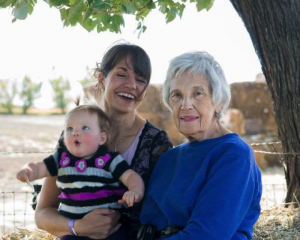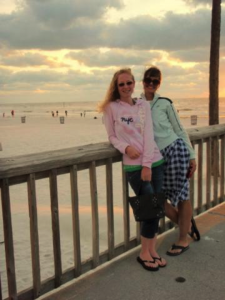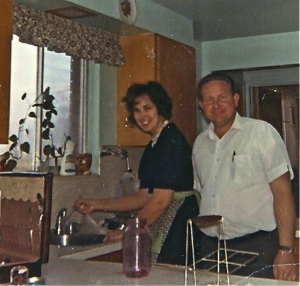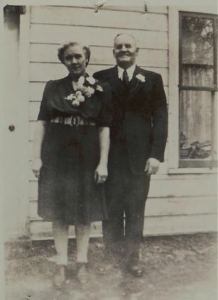Capture moments
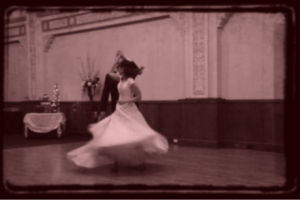
Submitted by admin on Sun, 07/29/2012 – 08:53
LEAVING A LEGACY THROUGH YOUR STORY
Article Two: A LIFETIME IS MADE OF MOMENTS
I didn’t expect to remember advice given on my wedding day because there was a lot going on, but something poignant stuck. As my husband and I knelt together at the ceremony, two large mirrors flanked our backs. Together they produced infinite reflections representing eternity. The man who married us explained that the images represent the past and future—and I expected him to mention this symbol because it is a beautiful part of this setting—but what he said next surprised me. “Be mindful that the most important part of this scene is not what was in the past nor what will be in the future. What matters most is this moment—the present—where eternity meets. What you do today links past to future, and it applies not just to your wedding day. As you live life together, it is too easy to always look ahead or behind and forget that this is the moment that counts. This moment is all we ever have. Right now. And Right now. And Right now.”
A lifetime is made of moments. Good storytelling captures them. But which ones? My advice to get started writing a memoir or family history—or even fiction for that matter—is to think small and specific. The over-arching story line can come later. There will be time to consider character development, themes, and how to string it all together. But not yet. Worrying about all that in the beginning will stall you so cut yourself free for now.
If you want to write a history that future generations will cherish reading, capture moments. If you do, your inspiration will come.
So what kind of moment is most important? The big one—like weddings—or the stuff of everyday that fills a lifetime? My answer is both, and for different reasons. This article discusses big events, and what I mean by big might come as a surprise. The next article will go small.
There is no bigger event in a lifetime than a wedding. Disney gets that females of all ages are wired to fanaticize of that day when all dreams come true. Not the first date, not the honeymoon and certainly not the lifetime of laundry afterward. There is one glittering evening with everything girls live for: a prince, lavish dresses, moonlight, and a new china pattern. She is the beautiful girl in the center of it all. My brother joked once that weddings are female porn.
So with all the buildup to this day, when a woman compiles her life history, how much attention does this day get? In my mother’s story, Every Essential Element, the courtship and uncertainty over competing suitors warranted two full chapters. How much space did the wedding day itself get? Precisely two paragraphs or 116 words.
So if weddings are condensed to a handful of words in a lifetime’s retelling, what does get the attention? When I think of big moments I land on the ones that are life changing. Contemplate these questions: What were the pivotal decisions that altered the course of a life forever? When did a difficult challenge require digging deep, and in so doing, the character learned who she really was? These are the elements of great writing and the stuff people love to read.
Try some mental exercises to bring this material into the fore:
• Think of a decision that changed the course of your life. How did you struggle with the choice, and when did you first know what you had to do? What led to that choice? What changed because of it? What did you learn about yourself?
• When did someone teach you a lesson you would carry with you forever? What brought you to that moment and how did it guide you in the future (think of a specific example when it played out differently because of the lesson).
• Did you ever have an argument with someone that would forever alter your relationship? Did something break or did you resolve long overdue issues? What was the buildup to it? What was the landscape afterward?
• Have you ever finished something you did not think you could do? In the middle of it were you unsure or determined? Did others help or did naysayers surround you? When did you know you would make it? How did this experience change you and the way you view yourself?
• Think of a time when you were backed against a wall, when you faced a very difficult challenge and you had two choices—come out fighting or succumb. What emerged in your character?
• Have you ever had a time that was you and another person or group against the world? How were you stronger together than you could have been alone? Did you triumph? How did it feel to be part of this team?
• Was there a day when you were out of money, time or food? How did you survive? What did you learn about yourself and the human condition?
• Have you ever experienced an answer to a prayer or the hand of God in your life? How did you know?
• What was a choice you later regretted, and that you never forgot? What was your thought process at the time? Did you know it was the wrong choice all along or did you understand this at a future moment? What did this teach you, and how did this growth affect a future choice?
• Have you ever decided to stand for what was right even if it meant standing alone? Did you pay a price for it? Were you ultimately vindicated? Would you make the same choice again?
You get the idea. To reiterate, begin by setting aside the big picture for now. That will come later. Conjure your memories or interview other people in the story and just see what comes. Some story will grab you, even if you don’t know why at first. Then—and this is important—when the spirit moves you sit down and write this vignette. Don’t worry where it is going, just write. You will be surprised how the process of discovery will lead you to insights. The most exciting writing days are when the process illuminates truth you had not understood before.
Enjoy this part. Please! Editing can be a grind but this is your chance to let go. Work on the stories that inspire you when they inspire you. If a scene presents itself do not delay. Sit down and capture it while your muse is present because this makes the best writing. You will refine it later. You can analyze its meaning after the fact. For now, set yourself free to discover what is there because a wonderful memoir is built on these scenes.
Read the full series on “Leaving a Legacy Through Story:”
